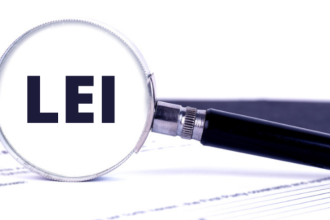Getting an insurance company to pay for repairs, however, can be tricky if you don’t know what you’re doing, so this guide will teach you how to get your insurance company to pay for a roof replacement and other repairs.
A leaking roof not only can cause damage to your home but also can affect the value of your property. That’s why it’s important to get your roof repaired before things get worse, especially if you have insurance that covers the damage.
So without further Ado, let’s dive into separate ways to get your roof fixed by your insurance.
1. Call your Insurance agent
After you’ve taken care of your emergency, it’s time to call your insurance agent. Now is not an ideal time to start searching for new insurance companies and changing coverage, so stick with what you know and trust (even if you don’t like your current company).
Call up your insurance company and ask if they cover replacement roofs. This may seem obvious, but many people forget that their homeowners’ policy only covers structural damage—not everything else.
For example, if you damage shingles due to weather conditions, they aren’t covered under standard policies. So call up now and make sure they understand what type of damage occurred so they can adjust your policy as necessary.
If you have any questions about whether or not your roof qualifies for replacement, don’t hesitate to ask!
Once you get all of that sorted out, go ahead and schedule an appointment with a local contractor. If possible, try to find someone who has worked on houses in your neighborhood before they are more likely to know about local codes and restrictions.
The more information you have at hand when talking with contractors, the better off you will be when negotiating costs. Once you choose a company, set up an appointment for them to come over and give you a quote.
If they say they need to see inside your attic first, let them do their job. Don’t allow anyone into your house without checking credentials first. Also remember that once repairs begin, never pay in full until work is complete.
Doing otherwise could leave you responsible for damages down the road should anything go wrong with the job itself or later inspections reveal other issues which weren’t caught during initial work (for example cracks forming where there were none before).
Be wary of scammers trying to take advantage of storm victims by offering lower rates than other companies—the rule here is simple: never pay more than half upfront.
2. Don’t accept partial coverage
If your roof needs replacement and you have comprehensive coverage on your home, you shouldn’t accept partial payment.
The insurance company wants only one thing: its money back. If they are not going to replace your roof with a new one, they will refuse to pay anything.
It’s in their best interest to get out of paying anything at all, so they may try suggesting that covering some of it is better than nothing. That is wrong! Insist on getting everything you paid towards that new roof!

Make sure you keep records of every conversation so that if it comes down to legal action, which it might well do, you will be prepared. There is no room for compromise here. You should make clear from day one that you want 100% of what you paid replaced by a new roof. Don’t take no for an answer!
3. Keep an eye on your policy
Some homeowner policies require you to make numerous claims before they’ll cover things like roof replacement.
However, if your policy is set up so that you’re not required to pay deductibles or policy fees, then every time something goes wrong in your home, you should call your insurance company and report it.
That way, even though insurance isn’t currently covering everything on your list of damages (for whatever reason), you can let them know about all of these problems at once when you call—and then be surprised when they end up paying for more than expected!
Of course, you should always keep track of any costs incurred by these extra repairs along with regular maintenance costs; otherwise, it will be tough to get reimbursed.
But don’t worry: This is one task where technology really helps. With some apps and services, it’s easier than ever to keep track of what’s going on with your house even when you’re away from home!
4. Know when to say no
Sometimes, if you have an insurance policy that offers limited coverage, your insurer may try to offer you an alternate type of compensation instead of paying for all repairs.
For example, if you have what’s called Actual Cash Value or Fair Market Value coverage (an umbrella term commonly referred to as AMV), your insurer might offer you money for a new roof.
The problem is that these types of policies only pay out a fraction of what it would cost to replace your roof.
So even though it might be tempting to take their offer and get cash now, you could end up with a leaky roof in just a few years’ time. If you want peace of mind and quality protection against future leaks, make sure you know when to say no and insist on getting full replacement value from your insurance company.
The most important thing is not knowing how much it will cost but knowing how much it will cost after deductibles are applied.
Conclusion
Before hiring anyone, make sure you have everything in writing. No matter how reputable a company is, there’s no guarantee that they won’t use shoddy materials or take shortcuts to lower their costs.
If you want to make sure that happens, read every word of your contract and make sure it says what you want it to say before signing on the dotted line.
If you have doubts about what is written, don’t be afraid to ask questions until you understand things fully.
You may even want to get a second opinion from another contractor if you aren’t satisfied with your initial consultation. This can help ensure that you know exactly what work will be done and when.















